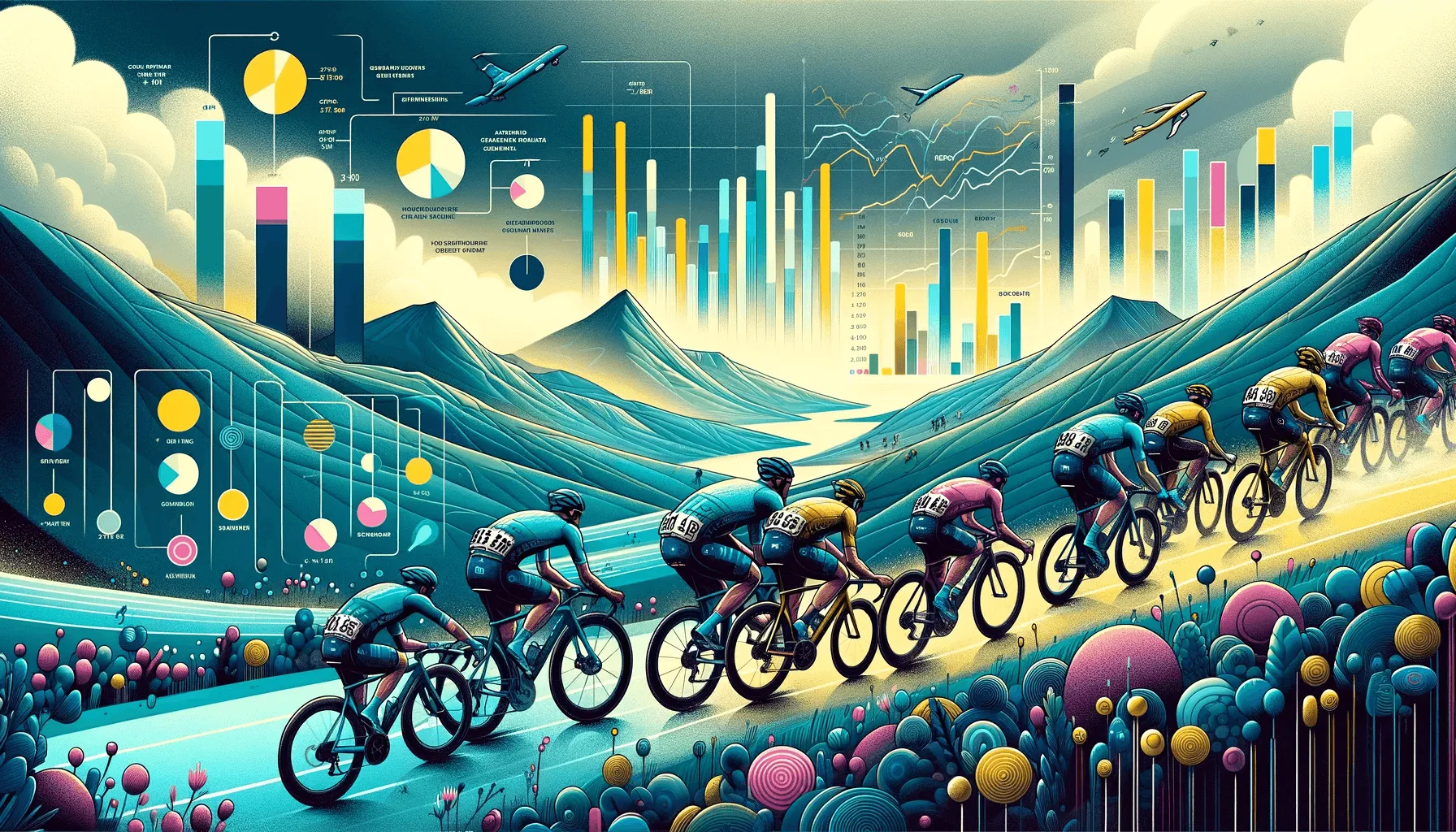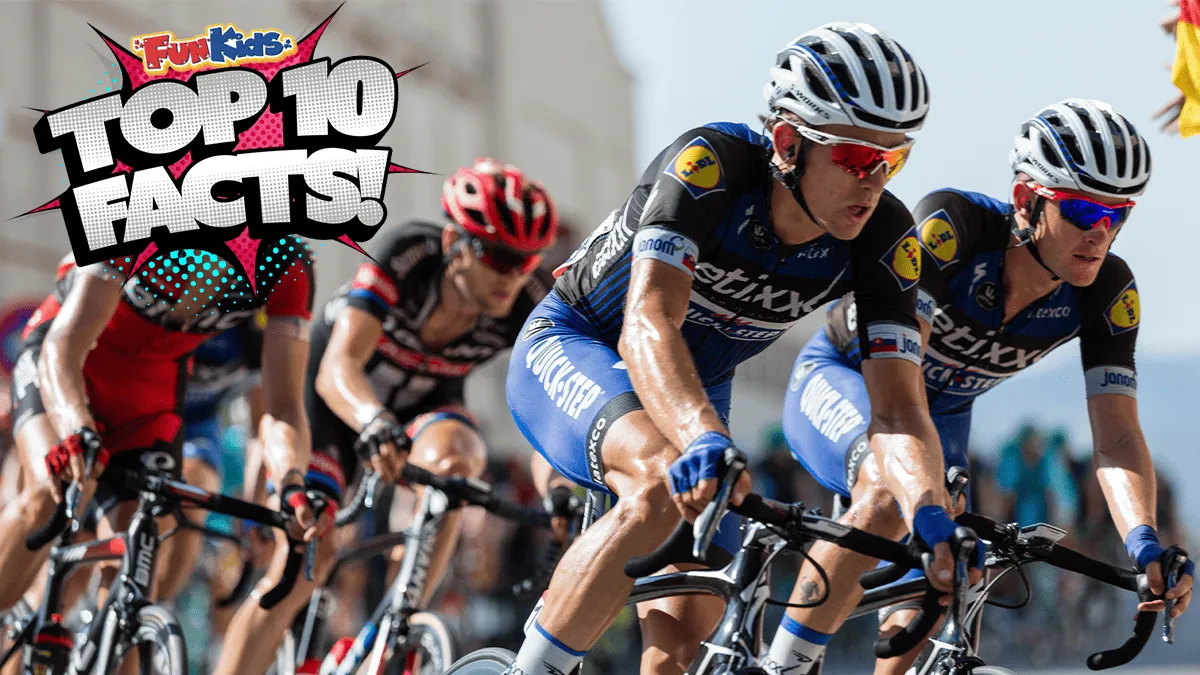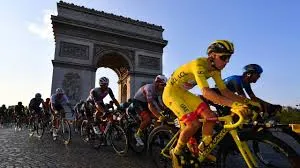The Tour de France is one of the most iconic and grueling cycling races in the world. It attracts millions of viewers every year and has a rich history that dates back to 1903. From the impressive mountain climbs to the intense sprints, the Tour de France is not only a physical challenge for the riders but also a thrilling spectacle for spectators. However, there is more to this famous race than just the cycling itself. In this article, we will delve into some interesting facts and stats about the Tour de France that you may not have known before.
1. A Race with a Rich History

The Tour de France was first organized by French newspaper L’Auto as a way to boost sales and promote its brand in 1903. It quickly gained popularity and became an annual event, with the exception of the two World Wars. Over the years, it has become the ultimate test of endurance and skill for professional cyclists.
Origins and Evolution of the Tour de France
The idea of organizing a multi-stage cycling race was conceived by Géo Lefèvre, a journalist for L’Auto, who proposed the race to his editor Henri Desgrange. The first edition of the Tour de France took place on July 1, 1903, with 60 cyclists starting from the Café au Réveil-Matin in Montgeron. The route covered 2,428 kilometers and consisted of six stages, with the longest being 467 kilometers.
Since then, the Tour de France has evolved significantly. The number of stages has increased, and the routes have become more challenging, with mountain climbs and time trials being added. The race has also attracted international attention, with participants from all over the world competing for the coveted yellow jersey.
The Iconic Yellow Jersey
The yellow jersey, or maillot jaune, has become synonymous with the Tour de France. It was first introduced in 1919 to make the race leader more visible to spectators. The color yellow was chosen because it was the same color as the pages of L’Auto, the newspaper that organized the race.
Initially, only the overall race leader wore the yellow jersey, but in 1974, additional colored jerseys were introduced for other categories such as the best sprinter and the best mountain climber. However, the yellow jersey remains the most prestigious and is still worn by the overall race leader.
The Oldest and Youngest Winners
The Tour de France has seen some impressive records over the years, including the oldest and youngest winners. In 1922, Belgian cyclist Firmin Lambot became the oldest winner at the age of 36. On the other hand, the youngest winner was Henri Cornet from France, who won the race in 1904 at just 19 years old.
2. A Grueling Test of Endurance

The Tour de France is a physically demanding race, and the riders go through intense training and preparation to tackle each stage. The race not only tests their strength and speed but also their mental resilience and endurance. Let’s delve into some interesting facts and stats about the physical demands of the Tour de France.
The Distance Covered
One of the most impressive statistics about the Tour de France is the total distance covered by the riders. The race covers approximately 3,400 kilometers, with each stage averaging around 220 kilometers. In recent years, the race has been made longer, with an increase in the number of stages and the addition of more challenging terrains.
To put this into perspective, the distance covered by the riders is equivalent to cycling from New York City to Los Angeles, with the added challenge of steep mountain climbs and varying weather conditions.
The Calories Burned
The Tour de France is not only a test of endurance but also a calorie-burning machine. On average, a rider can burn between 6,000 to 9,000 calories per day during the race. This is almost three times the amount of calories an average person would consume in a day.
To sustain such high energy levels, cyclists have to consume a high-calorie diet consisting of carbohydrates, proteins, and fats. They often eat six meals a day and carry snacks and energy bars during the race to refuel their bodies.
The Average Speed
The Tour de France is known for its fast-paced sprints and intense mountain climbs, but what is the average speed of a cyclist? On flat stages, riders can reach speeds of up to 60 kilometers per hour, while on mountain stages, the average speed can drop to 25 kilometers per hour due to the challenging terrain.
In 2015, the average speed of the race winner, Chris Froome, was 40.8 kilometers per hour. However, this varies depending on factors such as weather conditions and the difficulty of the route.
3. The Impact of Technology on the Race
Over the years, technology has played a significant role in making the Tour de France more efficient and accurate. From the early days of manual timing to the use of high-tech equipment, let’s explore some interesting facts and stats about the impact of technology on the race.
Timing and Tracking Systems
In the past, timing the race was a manual process, with officials using stopwatches and ringing bells to signal the start and end of each stage. However, in 1932, the first electronic timer was used, which enabled more accurate timing.
Today, the race uses state-of-the-art timing and tracking systems, including transponders that are attached to the bikes and GPS devices that track the riders’ positions and speeds in real-time. This not only ensures accurate timing but also allows viewers to follow the race online or on TV.
Doping Scandals
Unfortunately, technology has also been used to cheat in the Tour de France. Over the years, there have been several doping scandals that have tarnished the reputation of the race. For instance, in 1998, the Festina affair exposed a widespread use of performance-enhancing drugs by riders.
To combat this issue, the Union Cycliste Internationale (UCI), the governing body of cycling, introduced strict drug testing procedures and sanctions for any cyclists caught doping. They also implemented a biological passport program to monitor each rider’s blood and urine samples for any abnormalities that may indicate doping.
4. The Financial Side of the Tour de France

The Tour de France is not only a physically challenging race but also a major business venture. The event generates a significant amount of revenue for the organizers, sponsors, and host cities. Here are some interesting facts and stats about the financial side of the Tour de France.
The Cost of Organizing the Race
Organizing the Tour de France is no easy feat, and it comes at a hefty price. In 2019, the total cost of the race was estimated to be around 34 million euros, with the majority of the expenses going towards logistics and security. This includes setting up the race route, providing accommodation for the riders and support teams, and ensuring the safety of the spectators and participants.
Sponsorship and Advertising Revenue
The Tour de France is a highly sought-after event for sponsors and advertisers due to its massive global audience. The main sponsor of the race, LCL, pays an estimated 10 million euros per year for the naming rights, while other sponsors such as Skoda and Krys pay between 2-3 million euros annually.
On top of this, advertising during the race is also a lucrative opportunity. In 2019, the Tour de France generated approximately 163 million euros in advertising revenue, with TV broadcasting rights being the primary source of income.
Economic Impact on Host Cities
The race also has a significant economic impact on the host cities and regions. The influx of tourists and media coverage during the three-week event generates millions of euros in revenue for local businesses such as hotels, restaurants, and souvenir shops.
In addition, the promotional value of hosting the Tour de France is immense. It puts the spotlight on the city or region, highlighting its cultural and natural assets, and can attract more visitors in the future.
5. The Human Side of the Tour de France
Behind the intense competition and financial aspects of the Tour de France, there are also human stories that make the race even more interesting. From tales of triumph to moments of heartbreak, here are some facts and stats about the human side of the Tour de France.
The First Female Cyclist
While the Tour de France is predominantly a men’s event, there have been instances of female participation in the race. In 1955, Alfonsina Strada, an Italian cyclist, was allowed to compete in the race after she convinced the organizers that she was a male cyclist named “Alfonsin”. Despite finishing dead last in the race, her determination and courage earned her a place in Tour de France history.
Accidents and Injuries
Cycling at high speeds and over challenging terrain comes with its fair share of risks, and the Tour de France has seen its fair share of accidents and injuries. In 1997, the race was overshadowed by the tragic death of Fabio Casartelli, an Italian cyclist who crashed on a descent and suffered fatal head injuries.
In recent years, safety measures such as helmets and barriers have been implemented to reduce the risk of accidents. However, crashes still occur, with riders often sustaining injuries such as fractures, concussions, and road rash.
Charity and Social Causes
The Tour de France is not only about competition and financial gain. It has also been used to raise awareness and funds for various charities and social causes. For instance, in 2019, the race partnered with World Bicycle Relief to provide bicycles to help children in developing countries access education and healthcare.
Furthermore, individual riders often use their platform to support causes close to their hearts. In 2018, Chris Froome donated his prize money from winning the Tour de France to a charity that provides bikes to disadvantaged children in Africa.
6. The Legacy of the Tour de France

The Tour de France has left a lasting impact on not just the cycling world, but also on society as a whole. From inspiring future generations of cyclists to promoting environmental sustainability, here are some facts and stats about the legacy of the Tour de France.
Inspiring Future Generations
The Tour de France is a source of inspiration for many young cyclists who dream of one day donning the yellow jersey. The race has also been a launching pad for many professional cyclists, including five-time winner Miguel Indurain and current champion Tadej Pogačar.
In addition, the Tour de France has also inspired amateur cyclists to take up the sport and participate in long-distance rides and races. It has become a symbol of determination and perseverance, motivating people to push beyond their limits.
Promoting Environmental Sustainability
With millions of viewers and participants, the Tour de France has a significant environmental impact. However, the organizers have taken steps to promote sustainability and reduce the race’s carbon footprint.
For instance, in 2020, the race organizers joined forces with the United Nations Environment Programme (UNEP) to raise awareness about environmental issues and promote responsible and sustainable practices. This included using electric vehicles and encouraging spectators to use public transport or ride bicycles to the race.
The Dark Side of the Tour de France
While the Tour de France has had a positive impact on society, it has also faced criticism for its environmental impact and lack of diversity. The race generates a significant amount of waste and pollution, and there have been instances of littering by spectators along the race route.
Furthermore, the Tour de France has been criticized for its lack of diversity, with only a handful of non-white cyclists participating in the race over the years. This has led to calls for more inclusivity and representation in the sport.
Conclusion: A Race Like No Other
The Tour de France is not just a cycling race, but a cultural and historical phenomenon that has captured the hearts of millions around the world. It has seen ups and downs, records broken, and legends born. From its humble beginnings in 1903 to its current status as one of the most prestigious sporting events, the Tour de France continues to fascinate and inspire us. Let’s raise our glasses to the champions, the unsung heroes, and the human stories that make the Tour de France a race like no other.


